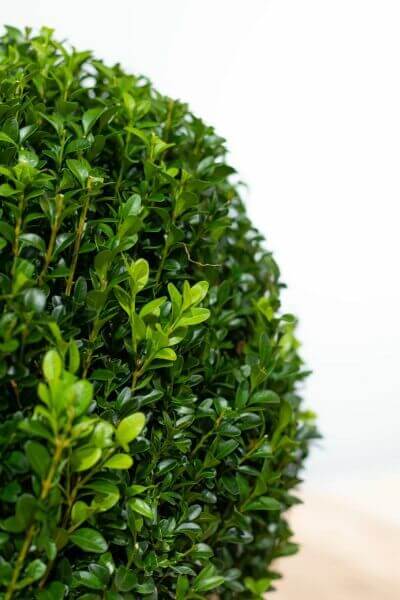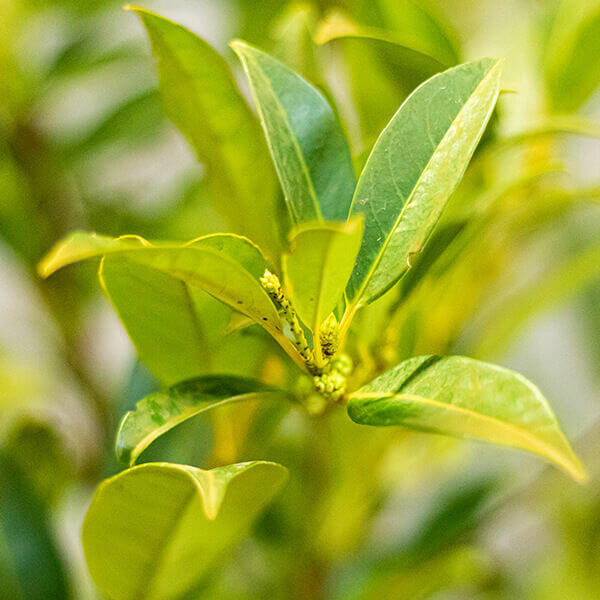Choosing The Right Hedging Plants
Choosing The Right Hedging Plants
Blog Article
Best Hedging Plants For Front Yards
Improve your garden's allure with lavish hedge varieties such as Yew (Taxus), Thuja, Laurel, Photinia, and Bamboo, commemorated for their structural integrity and ecological advantages.
Yew and Thuja offer evergreen protection and winter durability, while Laurel uses quick growth and broad, aromatic leaves.
Photinia includes seasonal charm with its dynamic red foliage, and Bamboo provides a low-maintenance, serene ambiance.
These hedges enhance air quality, lower noise, and produce tranquil, personal areas.
Proper planting, spacing, and upkeep make sure energetic growth and environmental consistency.
Check out how these lush ranges can elevate your garden's appeal and well-being.
Key Takeaways
Change Your Garden With Lush Hedge Ranges
- Select Yew for its thick, evergreen growth and unrivaled durability.
- Go with Laurel for its quick growth and broad leaves, guaranteeing fast personal privacy.
- Pick Photinia for its lively seasonal foliage, which turns a striking dark red.
- Make use of Bamboo for a low-maintenance, winter-hardy hedge with aesthetic appeal.
- Space plants 2-3 per meter and prune regularly for optimal growth and health.
Popular Hedge Plants
When changing a garden with lavish hedge ranges, it's necessary to think about popular hedge plants such as Yew, Thuja, Laurel, and Photinia due to their unique characteristics and benefits.
Yew (Taxus) is highly respected for its durability and thick, green development, making it a prime option for withstanding landscapes.
Thuja is kept in mind for its evergreen foliage and robust winter durability.
Photinia adds seasonal vibrancy with red leaves that darken in time, producing dynamic visual appeal.
Laurel offers rapid development and aromatic, broad leaves, perfect for fast privacy.
Furthermore, Bamboo is an excellent choice for atmosphere, using a low-maintenance, winter-hardy choice that improves the garden's aesthetic with its elegant, swaying walking canes.
These choices accommodate a variety of horticultural requirements and choices.
Benefits of Garden Hedges
Garden hedges offer a multitude of advantages, making them a valuable addition to any landscape. These natural barriers are cost-effective to carry out and offer considerable wind protection, boosting air flow and contributing to sound decrease. The dense foliage of hedges like Thuja and Beech makes sure personal privacy by obstructing presence, producing a peaceful and secluded environment.
Hedges also play a vital role in microclimate guideline, offering a steady environment that promotes plant development and lessens temperature changes. Their intricate leaf structures filter contaminants, improving air quality and adding to a much healthier garden ecosystem.
Additionally, hedges master sound decrease, taking in and deflecting acoustic waves to lower ambient noise levels. This double performance of providing both acoustic and visual privacy improves the total tranquility and visual appeal of any garden.
Planting and Maintenance Tips
For a successful hedge, careful preparation of the planting area is crucial. Make sure the soil has proper pH and drain to support strong root development.
Space the plants properly for the picked species. Water the hedge regularly during its initial development stage, adjusting as needed with seasonal changes.
Carry out a systematic pest control and illness avoidance method, using chemical or natural treatments when necessary. Regularly examine for aphids, termites, and fungal infections.
Apply mulch to maintain moisture and suppress weeds. Seasonal pruning promotes dense growth and air blood circulation, essential for plant health.
Following these guidelines will help you cultivate a dynamic, properly maintained hedge that boosts the appeal of your garden.
Spacing and Cutting Standards
Spacing and Trimming Guidelines
Correct spacing and cutting are crucial for cultivating healthy, visually appealing hedges. Adequate spacing ensures each plant receives enough nutrients, light, and air flow.
Follow these standards for optimum hedge maintenance:
- Spacing: Position hedge plants 2-3 plants per meter to motivate robust growth.
- Pruning Strategies: Regular pruning is vital for maintaining preferred hedge height and shape. Cut new development in summer season and cut down older wood throughout winter season.
- Seasonal Care: Adjust trimming techniques and schedules according to seasonal requirements to ensure plant health.
- Hedge Height: Regularly display and cut to maintain the wanted hedge height and achieve consistent aesthetics.
Following these steps will guarantee your hedge grows, improving both the appeal and functionality of your garden.
Selecting the Right Hedge
Choosing the Right Hedge
Selecting the proper hedge includes assessing factors such as fully grown height, foliage density, and environmental resilience. Effective hedge plant selection needs comprehending hedge plants each species' development qualities and site-specific adaptability.
For instance, Yew (Taxus) provides excellent durability and dense development, while Thuja is notable for its winter season durability. In addition, considering upkeep requirements is important; fast-growing species like Laurel or Privet need regular trimming, whereas low-maintenance options like Bamboo or Ivy may be preferable for those looking for minimal upkeep.
Environmental aspects such as soil type, light accessibility, and moisture conditions must likewise direct the choice process. This cautious technique ensures the picked hedges will thrive, offering both visual and functional benefits to the garden landscape.
Shipment and Planting Suggestions
To ensure your hedge plants prosper, they need to be delivered by specialized couriers and planted without delay upon arrival.
Follow these essential steps for effective planting:
- Soil Preparation: Improve the soil with raw material to enhance drain and nutrient content.
- Planting Depth: Develop a trench two times the width and equivalent to the depth of the root ball.
- Watering Techniques: Water thoroughly after planting, keeping the soil consistently damp however not filled.
- Mulching: Apply a layer of mulch to retain moisture and reduce weeds.
Customer Support and Service
Given the essential function of prompt help in horticultural pursuits, our consumer assistance group is available six days a week through telephone, email, and social media to offer professional guidance and quickly attend to any issues. Their devotion to fast action times makes sure consumer satisfaction by resolving queries related to plant health, optimal planting approaches, and upkeep schedules.

----------------------
Telephone
This thorough support group, reinforced by a stellar 9.3/ 10 client score, highlights our dedication to improving the gardening experience for every single customer.
Regularly Asked Concerns
The Length Of Time Does It Consider Hedge Plants to Develop?
Hedge plants usually need one to 3 years to end up being totally developed, with the specific period differing by species and growing conditions.
Efficient care during this crucial period is essential for robust growth. Constant watering, alert weed control, and proper fertilizer application are critical in promoting strong root development.
For example, fast-growing species like Laurel may develop more rapidly, while slower-growing ranges such as Yew may take longer. Persistent maintenance speeds up the facility procedure, resulting in dense and healthy hedges.
What Are the Finest Hedge Plants for Privacy?
The question of the very best hedge plants for personal privacy involves evaluating evergreen and deciduous alternatives.
Evergreen hedges like Thuja, Laurel, and Cypress supply year-round coverage, ensuring constant personal privacy.
In contrast, deciduous hedges such as Beech use seasonal personal privacy, shedding leaves in colder months.
Secret upkeep suggestions for personal privacy hedges consist of regular cutting, fertilizing in spring, and appropriate spacing-- typically 2 to 3 plants per meter.
In addition, consistent watering and diligent weed elimination are essential for promoting healthy, thick growth.
Can Hedge Plants Bring In Wildlife to My Garden?
Yes, hedge plants can draw in wildlife to your garden by providing vital benefits like shelter, food, and nesting websites, thus boosting local biodiversity. For circumstances, yew, holly, and laurel are outstanding for bring in birds, while ivy supports a variety of pests.
Nevertheless, it is essential to keep in mind that there are some drawbacks, such as increased upkeep to manage insects and routine upkeep. Carefully picking and maintaining hedge ranges can assist balance these advantages and downsides, ultimately fostering a dynamic and sustainable community in your garden.
Exist Any Blooming Hedge Plants Available?
Yes, there are flowering hedge plants available that can boost the appeal of your garden.
For instance, Elaeagnus, also called Olive Willow, produces fragrant white flowers in the fall, including a touch of sophistication.
Photinia, another popular choice, showcases vibrant red leaves that develop into an abundant green, creating a dynamic visual impact throughout the seasons.
To make sure these plants thrive, it's vital to practice appropriate pruning methods and seasonal upkeep, such as cutting brand-new development in the summer and cutting back in the winter.
These steps will assist preserve the health and visual appeal of your blooming hedges.
How Do I Avoid Bugs in My Hedge Plants?
To prevent pests in hedge plants, employ natural pest control methods and maintain proper hedge care. Introduce advantageous bugs like ladybugs, which take advantage of hazardous insects, to produce a balanced ecosystem.
Regularly inspect your hedges for signs of infestation and quickly remove any affected parts to avoid the spread. Make sure the health of your hedges by using well balanced fertilizers and providing appropriate water.
Make use of mulching to keep soil wetness and proper spacing to reduce plant stress and promote robust development. These practices jointly help in reducing pest issues and keeping a healthy hedge.
Conclusion
In essence, picking the best hedge varieties such as Yew, Thuja, and Laurel can transform any garden into a serene sanctuary. These plants offer year-round greenery, boost aesthetic appeal, and offer useful benefits like noise decrease and wind security.
Proper planting strategies, precise spacing, consistent watering, and seasonal cutting are important for optimal development.
Trustworthy delivery services and skilled client support guarantee a seamless experience from purchase to planting, making it easier than ever to elevate your outside space.
Garden hedges provide a wide range of benefits, making them a valuable addition to any landscape. These natural barriers are cost-effective to carry out and provide substantial wind protection, improving air blood circulation and contributing to noise decrease. The thick foliage of hedges like Thuja and Beech ensures personal privacy by obstructing exposure, developing a peaceful and remote environment.

Pruning Strategies: Routine pruning is essential for keeping wanted hedge height and shape. Cut brand-new growth in summertime and cut back older wood during winter season.
Report this page